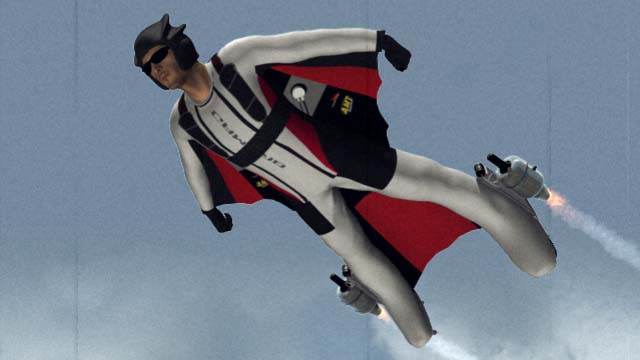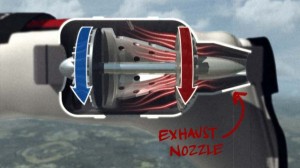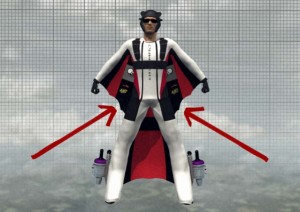Stunt Junkies: Jet Powered Wingsuit: Visa Parviainen
TMBA is the New York animation studio that created the "physics behind the stunts" animations for Discovery Channels "Stunt Junkies" TV show.
For this stunt Visa Parviainen jumps from a helicopter in a powered wing suit with two small turbojet jet engines attached to his boots. The turbojets provide the thrust needed to achieve horizontal flight. Visa hoped to reach speeds of approximately 120 mph and a flight distance of approximately 20 miles. On his last attempt he "flew" for approximately two minutes; this time, using larger engines, he hoped to sustain horizontal flight for an unbelievable five minutes.
The wingsuit was modified to include the throttle, kill switch and fuel bladders in the cells of the wing.
The wingsuit flier enters freefall wearing both a wingsuit and parachute equipment. Exiting an aircraft in a wingsuit requires skilled techniques that differ depending on the location and size of the aircraft door. These techniques include the orientation relative to the aircraft and the airflow while exiting, and the way in which the flier will spread his legs and arms at the proper time so as not to hit the aircraft or become unstable in the relative wind. The wingsuit will immediately start to fly upon exiting the aircraft in the relative wind generated by the forward speed of the aircraft.
A wingsuit flier manipulates the shape of his body to create the desired amount of lift and drag although most wingsuits have a 2 to 1 ratio. This means that for every foot they drop, they go two feet forward. With body shape manipulation and by choosing the design characteristics of the wingsuit, a flier can alter both his forward speed and fall rate. A pilot can choose to manipulate his fall rate towards Earth with the goal of achieving the slowest vertical speed in order to prolong time in freefall, or the pilot can try to maximize the horizontal glide distance across the Earth. The pilot manipulates these flight characteristics by changing the shape of his torso, arching or bending at the shoulders, hips, and knees, and by changing the angle of attack in which the wingsuit flies in the relative wind, and by the amount of tension applied to the fabric wings of the suit.
While still very experimental, powered wingsuits, often using small jet engines strapped to the feet or a wingpack set-up, allow for even greater horizontal travel and even ascent.



